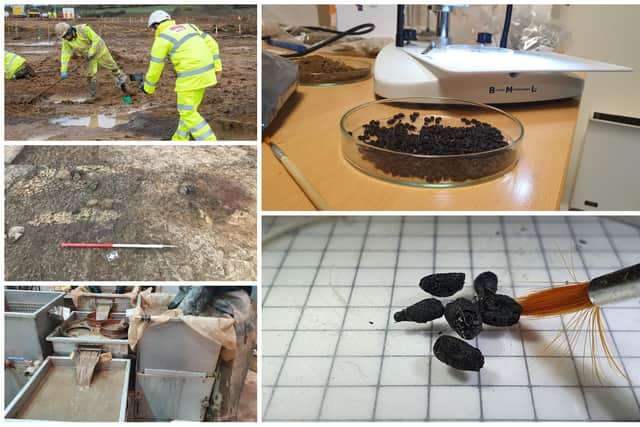Fancy an early pint? Evidence of Roman beer production found near Bedford
and live on Freeview channel 276
Evidence of ancient beer production has been found as part of the work on the Black Cat roundabout.
Archaeologists from MOLA (Museum of London Archaeology) and the Cambridge Archaeological Unit made the discovery at a site known as Field 44 in Central Bedfordshire.
Advertisement
Advertisement
Excavated between July 2021 and February 2022, the dig revealed the remains of a farmstead in use from the Middle Iron Age (c.300-100 BC) to the late Roman period (AD 201-400)


Among the many discoveries at Field 44 were the remains of a Roman oven, used to dry grains.
Now archaeobotanists have identified charred spelt grains that were left to germinate before being dried within this structure.
As large quantities of grains are only allowed to germinate when the aim is to produce malt – this strongly suggests people living at the settlement were involved in beer production.
Advertisement
Advertisement
Interestingly, little evidence of the structures needed for brewing have yet been identified, so it is unclear whether the people at Field 44 were completing the process on site.
Rachel Ballantyne, project science adviser, said: “It is possible only malt was being produced here, which was then taken to be brewed elsewhere.
"This raises interesting questions about how the people living in this farm might have been interacting with neighbouring communities as part of a wider trade network.”
Experts are also studying the remains of ancient plants, invertebrates and pollen which were found.
